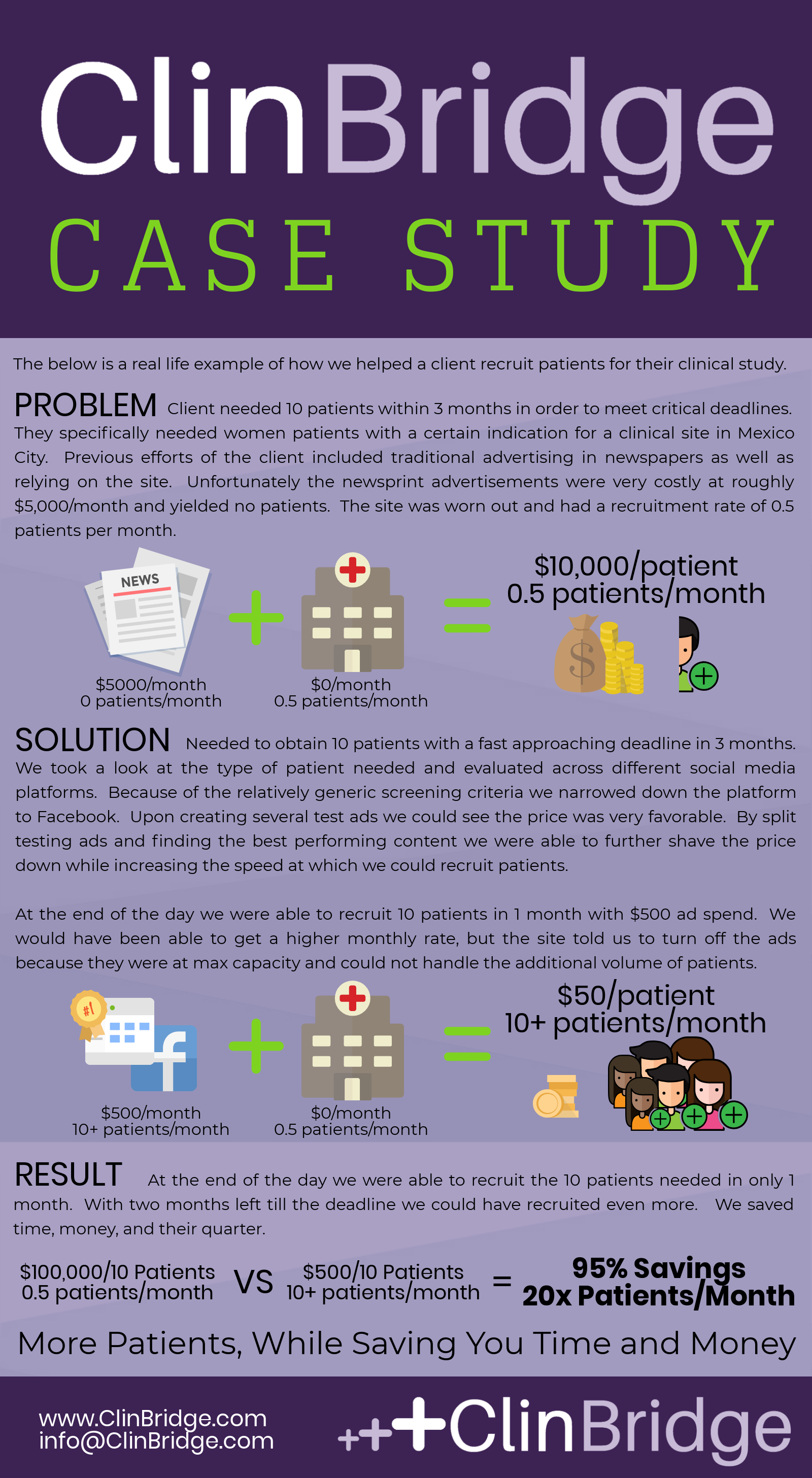
The infographic above highlights a real life example of a situation a client was in.
Problem
Many clients find themselves behind on their study because not enough patients are enrolling in the study. It is no surprise that many of these clients are sticking to what worked in the past and relying on sites to recruit patients.
Lets think about some of the traditional methods of advertising such as TV, radio, print newspaper, and magazines. When you are watching Game of Thrones and it cuts to a commercial break do you watch the commercial? Or do you immediately go to your phone and start browsing Facebook or check to see if your fantasy team is winning? How big was the newspaper back in the day when your dad would read the paper? How big is it now?
Traditional methods of advertising are dying and over priced, the attention is not there.
Clients also rely heavily on the sites to recruit patients. Put yourself in their shoes. The administration has booked their schedule to the max with 4 patients an hour. They can barely get their notes on the EMR. The last thing on their mind is your study. What happens if they don’t recruit patients for your study? Maybe they get a phone call from you. What happens if you don’t get the patients for your study? The study fails, and maybe the company.
Sure, the site and PI are reimbursed for their time and efforts, but it is not the focus of their day, it is last on the list.
In our case study the client needed 10 patients in 3 months and they were struggling because of what was mentioned above. Print ads were expensive and yielded no results and the site just did not have the capacity to spent time on the study.
Solution
The solution is you need to take patient recruitment into your own hands and advertise on platforms where peoples eyeballs are going.
In our case study we took a look at the type of patient needed and compared it across all the available platforms. We identified Facebook as the best candidate and started to split test ads. We quickly found that all the ads were performing at very cost effective price point, but we took it one step further. We kept testing until we found the best performing ad. The best performing ad ended up converting 3x as many patients as our worst ad, which meant that while we could still get a good deal with our worst ad, the best one would cut down costs and time by 3x. The great thing about Facebook as a platform is you can see all sorts of metrics which allow you to make a real time decision. It only took us a week to find the best ad.
Result
At the end of the day we were able to recruit 10 patients in 1 month with only $500 in ad spend. We would have recruited more than 10 patients in that month but the hospital told us to turn off the ads because they were at max capacity and could not serve the additional volume of patients. Keep in mind we were using the ClinBridge Advantage so we were not sending over low quality patients who were not a good fit for the study.
When the dust settled we were able to calculate that we were 95% cheaper than the traditional advertisements the client was previously using and recruiting at a rate that was 20x faster.
